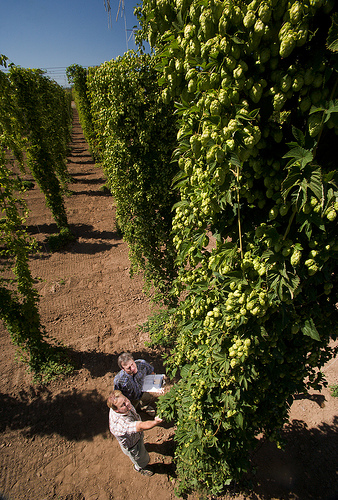Summer is just around the corner with most schools and school meal programs closing down for summer break. Without school meals to depend on, too many kids don’t have access to a nutritious meal. The Summer Food Service Program provides kids in low-income areas a free nutritious meal or snack each day.
An expanded partnership among USDA, Texas Department of Agriculture and Catholic Charities of the Rio Grande Valley can potentially triple the number of kids served this summer through the Summer Food Service Program in the Rio Grande Valley. Read more »

Yenifer stands in front of her family’s small house, which she shares with her mother and two brothers.
The USDA McGovern-Dole Food for Education Program is working to make a difference in Central America. Guatemala has one of the highest rates of stunting in the world due to chronic malnutrition. More than 90 percent of families live on less than $2 a day and as a result, the majority of children are obligated to help their parents in the fields and stop attending school. Without education, their opportunities for work are greatly reduced. Read more »
Cross posted from the Let’s Move! blog:
I can’t tell you if there are 10,000 lakes in Minnesota, but I can tell you that there is one creative group of students the South Education Center Alternative (SECA) in Richfield, Minn. Richfield was the next stop in the First Lady’s Recipes for Healthy Kids competition judging round. We were eagerly anticipating the visit to SECA because their entry in the whole grains category, Porcupine Sliders, definitely caught our attention with their prickly title.
SECA students Adilene, Chris, Dominic, and Dolores look like they are paving a culinary future for themselves with this hit recipe. Along with chef Todd Bolten, teacher Theresa Guthrie, and public health nurse Mary Lair, the students developed the Porcupine Sliders recipe, one of 15 semi-finalists. Read more »
Recently I attended a presentation and groundbreaking near Midland, Michigan, for a unique USDA Rural Development Community Facilities project: A residential treatment center for the Ten Sixteen Recovery Network.
This is an unusual type of project for our agency. Our community facility projects tend to involve a police car, fire truck or township hall. Several people at the event (including news reporters) remarked on this. I pointed out that while a project of this kind may be uncommon, there is nothing usual about it being considered. Fire trucks and police cars tend to dominate community facilities because these tend to be the applications we receive. Read more »

Hops growing on trellises in Corvallis, Oregon.
This post is part of the Science Tuesday feature series on the USDA blog. Check back each week as we showcase stories and news from the USDA’s rich science and research portfolio. Read more »
It is the goal of every USDA Rural Development program to help improve the economy and the quality of life in rural communities across this country – but with some projects, the impact of agency investment is not always obvious in the early stages. Once in a while, however; you have one that creates an economic domino effect with a return on investment that is nearly immediate.
A great example of such a project is taking place in Mercer County, Kentucky, and involves the expansion and upgrade of the Harrodsburg Water Treatment Plant. In 2010, Rural Development provided loan and grant funds to increase the plant’s capacity from four to six million gallons per day (MGD). Read more »


